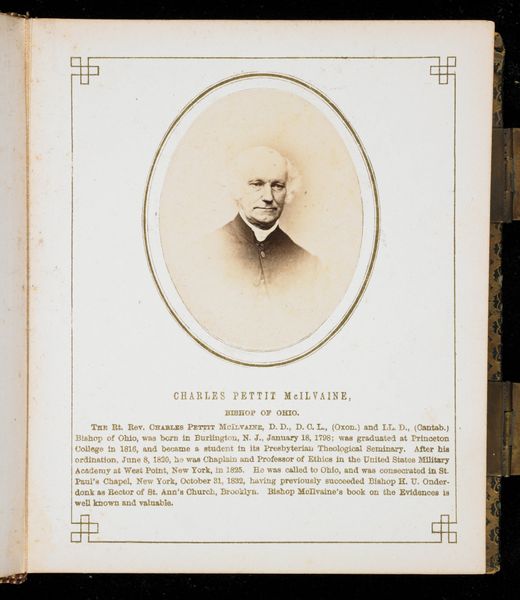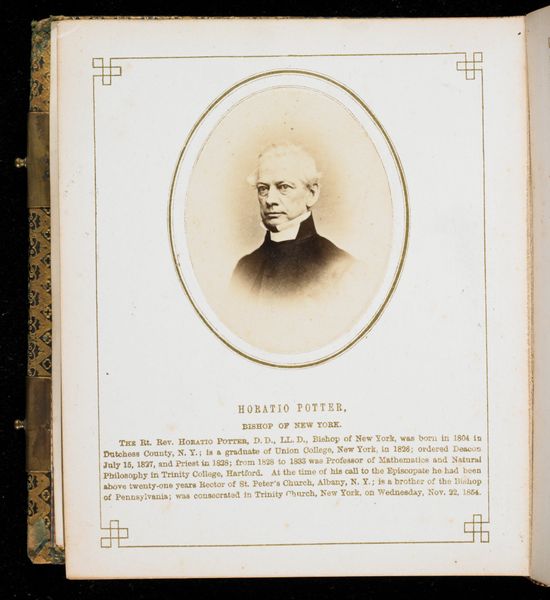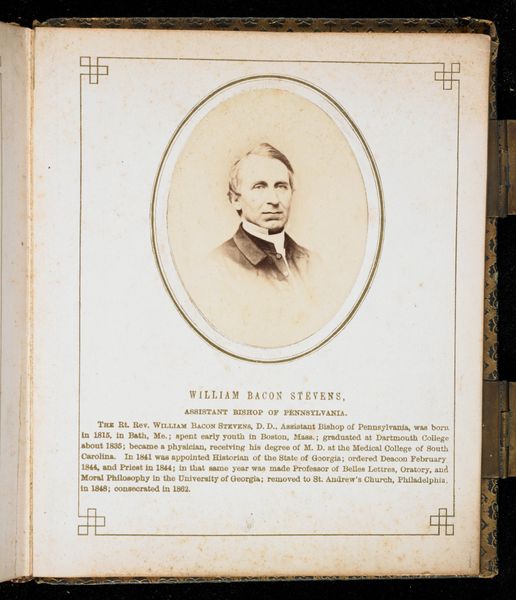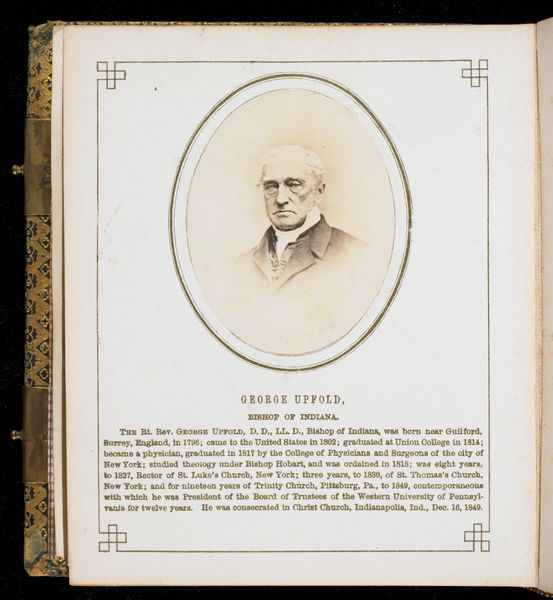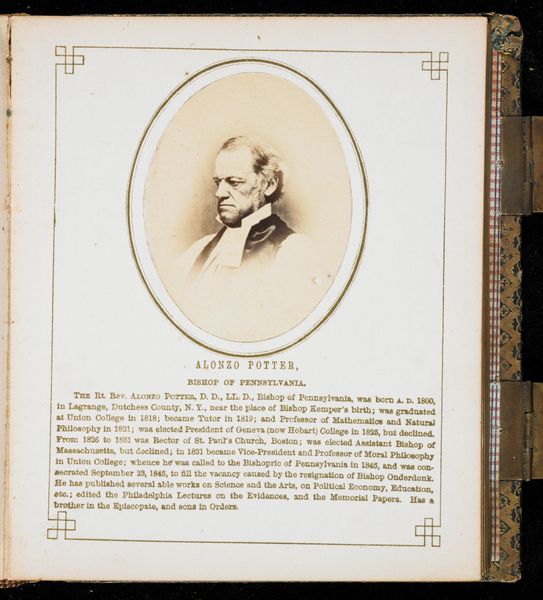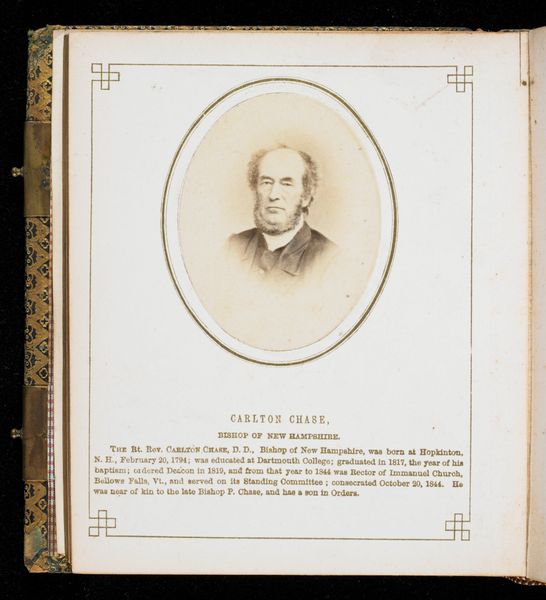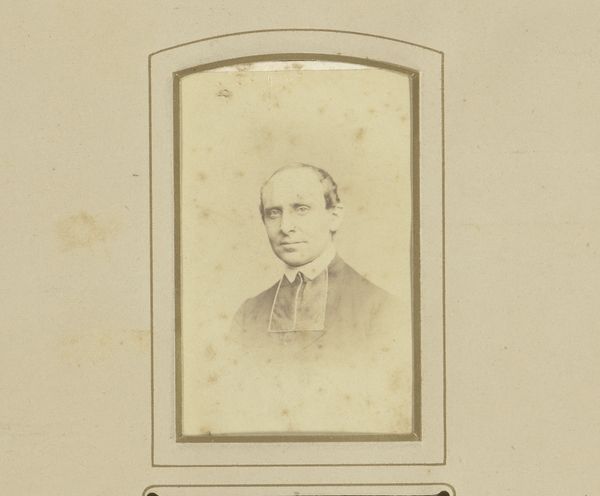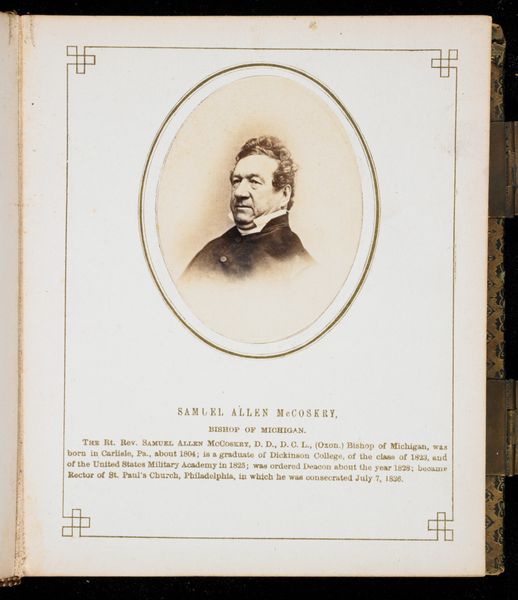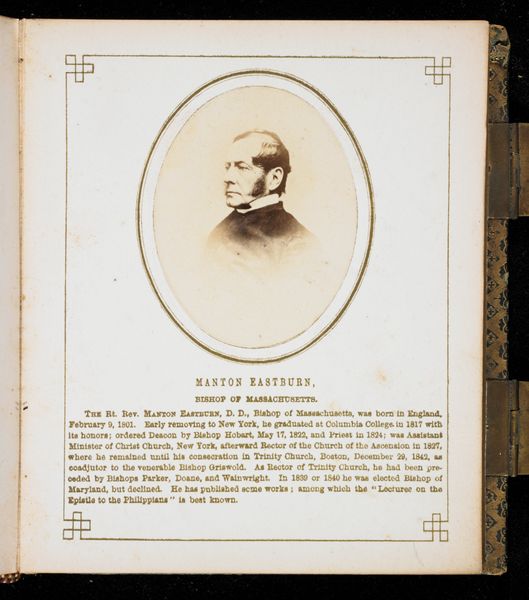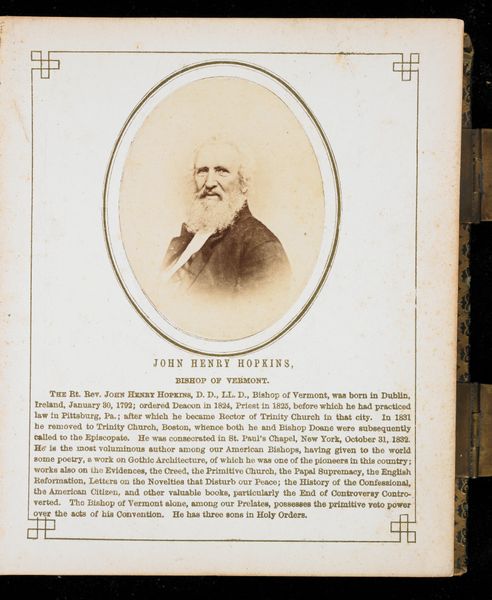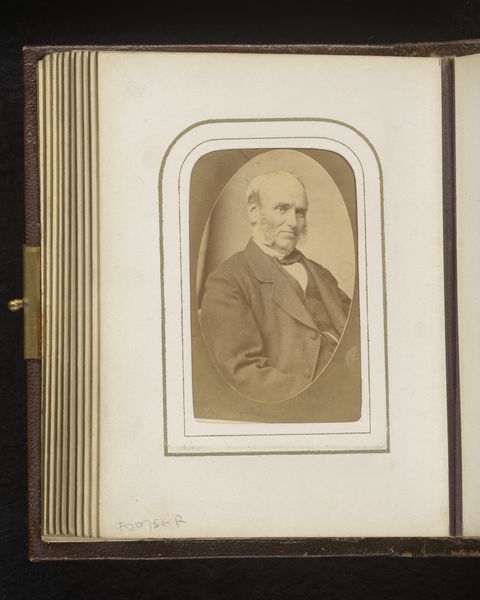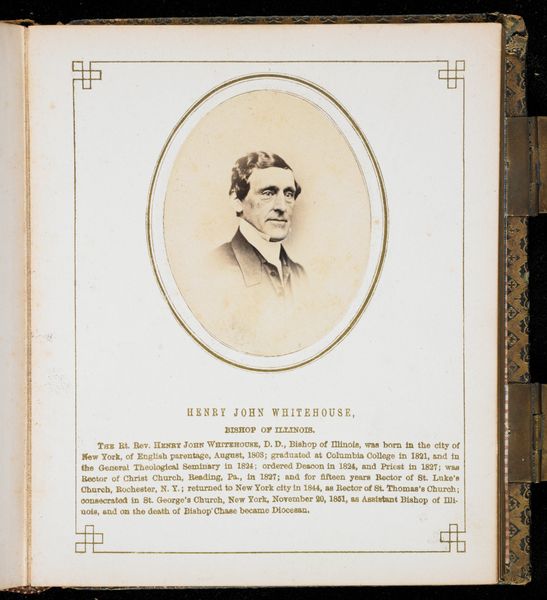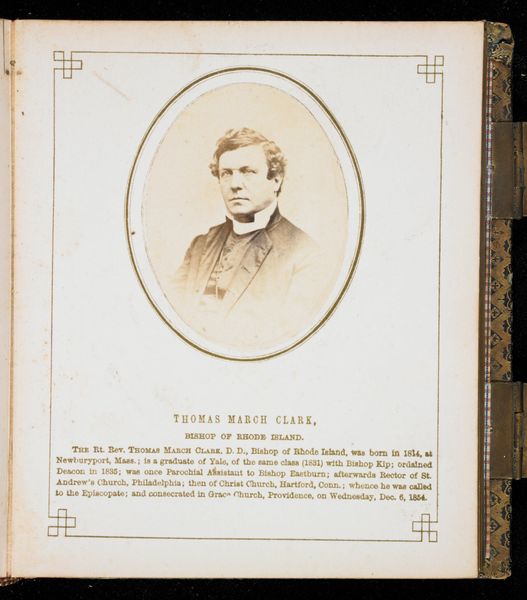
albumen-print, daguerreotype, photography, albumen-print
#
albumen-print
#
portrait
#
daguerreotype
#
photography
#
united-states
#
academic-art
#
albumen-print
Dimensions: 2 3/4 x 2 1/8 in. (6.99 x 5.4 cm) (image)5 3/4 x 4 3/4 in. (14.61 x 12.07 cm) (mount)
Copyright: Public Domain
Editor: Here we have Jeremiah Gurney’s albumen print of Henry Benjamin Whipple, taken around 1862. The portrait is framed in an oval, and he appears very distinguished in his clerical collar. It has an almost ethereal quality. What social narratives can we unpack from this portrait? Curator: It's crucial to see this image through a lens that acknowledges Whipple's role in the fraught relationship between the US government and Native American communities. As an Episcopalian bishop, he advocated for Native rights, which is commendable. But we must consider the power dynamics inherent in that advocacy. Editor: Power dynamics? Could you elaborate? Curator: Consider the historical context. This photograph was taken during the Civil War, a period of intense national upheaval but also of continued westward expansion and dispossession of indigenous lands. Whipple, while arguing for fairer treatment, was still operating within a system of colonial dominance and assimilation. His efforts to "help" could also be seen as attempts to impose Western values. Do you see that tension at play here? Editor: That's a compelling point. I hadn’t considered the inherent contradictions of his position. It’s difficult to separate his genuine intentions from the broader, oppressive structures of the time. So his "advocacy" isn't necessarily a straightforward good thing. Curator: Precisely. It asks us to question whose voices are amplified and whose are silenced, even in acts that appear benevolent. We can’t erase the complexity of the United States’ history. Editor: This reframes how I understand these historical portraits. I’m leaving with a deeper understanding of historical nuance and unintended effects, thank you! Curator: It's crucial to examine these nuances, to ask difficult questions about historical narratives, and see beyond surface appearances. I'm so glad we could analyze that together.
Comments
No comments
Be the first to comment and join the conversation on the ultimate creative platform.
